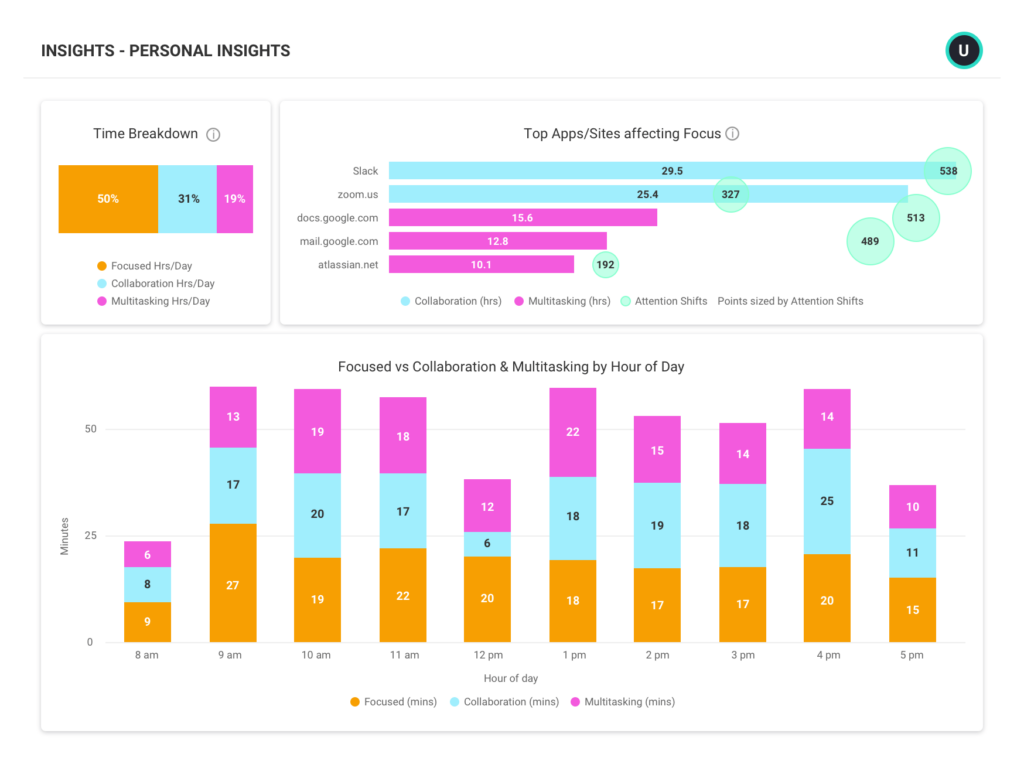In part two of our blog series, we explore two of the main ways that workforce analytics insights enable better business outcomes and improve both employee and customer experiences, no matter where they’re based.
Throughout that blog, we learned that a successful workforce analytics program can not only help organizations build a partnership between employers and employees, but also provide insights to gain visibility of employee activity on an individual, team, and organizational level. This visibility enables organizations to create alignment and trust between employees and managers, while continuously improving engagement.
Now, in part three of our series, here are three ways to make sure that your workforce analytics tool is implemented successfully and effectively.
Treat it as a Partnership
When introducing a workforce analytics program into your organization, give employees as much transparency as you can. Make sure that your employees understand from the get-go that workforce analytics is about leaders, managers, and employees coming together to identify ways to increase productivity, wellness, and engagement rather than spy on employees.
Trust and transparency are essential when building productive teams, so be upfront about what data you collect and how you intend to use it. There should be some level of access given to every person involved in the program so everyone knows that they’re invested and included in the implementation.
For example, employees should be able to see their activity data within the workforce analytics tool, so they can understand consistent or inconsistent working habits and make adjustments. A workforce analytics tool only benefits the entire company when everyone is assigned the correct roles within the platform to keep operations steady and organized.
Make Roles as Specific as Possible
While the insights from a workforce analytics platform are meant to help unify teams, employees could still be wary that their personal data are visible to others, and may even be used against them. This is why it’s important to be transparent when assigning specific roles with specific permissions for using the platform.
Protecting confidentiality with customizable user permissions and settings helps employees feel safe. And, you can empower employees by giving them access to Personal Insights for self-driven ownership and management of work habits.

Assigning specific, granular roles will ensure that managers and employees have the right level of privacy within the platform and can customize workflows on a team-by-team basis.
When assigning roles, it’s also important to keep in mind that the people who will be analyzing data are equipped to translate them into clear, actionable insights. This leads to our next tip…
Don’t Leave Training Behind
Anyone in an organization who is tasked with using analytics to identify improvement areas must be trained to properly interpret the data.
But getting your teams up to speed doesn’t have to be a challenge, as many workforce analytics tools offer training and classes to support customers at every step of implementation and beyond. Check if your workforce analytics tool has training resources so teams can get best practices for turning workforce insights into action.
If training is overlooked, your organization could be risking misuse of information, data leaks, and inaccurate employee reports.
Conquer the Remote/Hybrid Work Model
With hybrid-work models seemingly here to stay, it’s critical that employees feel supported, seen, and heard by their managers. A successfully implemented workforce analytics platform will keep your company productive and healthy with insights into employee workloads, focus hours, and bottlenecks at the individual, team, and organizational levels.
To learn more about the challenges and benefits of using a workload analytics tool, check out parts one and two of this three-part blog series.
Ready to get started? Create your own ActivTrak account in minutes.
About ActivTrak
ActivTrak’s workforce analytics provide predictive insights that help leaders, managers, and employees build trust, deepen engagement and boost productivity in the modern, hybrid workplace. This work is supported by the ActivTrak Productivity Lab, a global center for ground-breaking research and expertise that leverages data sourced from more than 9,500 customers and over 550,000 users. Based in Austin, Texas, ActivTrak is backed by Sapphire Ventures and Elsewhere Partners and is led by a seasoned team of software industry veterans. To learn more visit: https://activtrak.com/.





